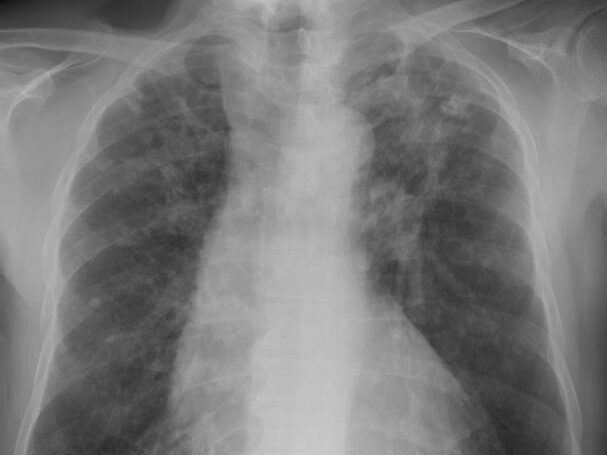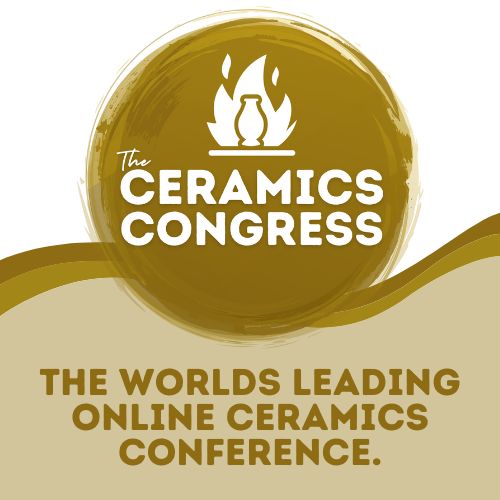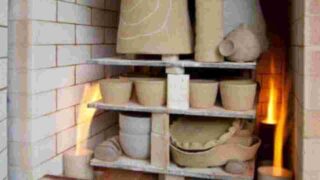As ceramic makers, we often find solace in the tactile nature of working with clay. However, amidst the joy of sculpting and crafting, it’s crucial to be aware of potential health risks associated with certain materials, particularly silica dust.
Silica, a common component in clay and glazes, can pose a serious threat to respiratory health if not handled with care. In this blog, we delve into the condition known as Silicosis, shedding light on its causes, symptoms, and most importantly: the preventive measures that you can take to protect your well-being while pursuing your artistic endeavors.
What Exactly is Silicosis Anyways?
As a potter or sculptor, you’ve likely come across this term already, whether on the Health & Safety label of your bag of clay, or through a studio safety induction. It’s clear that it’s a serious health condition, but what exactly is it?
The American Lung Association describes Silicosis as an “an interstitial lung disease,” which, put simply, is a disease that causes scarring (fibrosis) of the lungs. This scarring causes stiffness in the lungs which makes it difficult to breathe and get oxygen to the bloodstream. Symptoms are irreversible, and typically worsen over time. In the case of Silicosis, the scarring is caused by silica particles, the crystalline material that is an essential component of our clay and glazes.
According to the NHS, Silicosis usually develops after being exposed to silica for 10-20 years, although it can sometimes develop after only 5-10 years of exposure. Due to the disease being caused by prolonged exposure, It’s possible that you will not notice any problems until after you’ve stopped working with silica dust.
In some Silicosis cases, the scarring caused can lead to a form of severe fibrosis, known as Progressive Massive Fibrosis (PMF). For these patients, extreme scarring and stiffening of the lung can make it difficult to breathe. Having Silicosis also increases the risk of other health problems, including tuberculosis, lung cancer, and chronic bronchitis.
What are the Symptoms?
Silicosis is primarily characterized by a persistent cough, persistent shortness of breath, along with weakness and tiredness. While initially symptoms are mild, as the scarring continues to worsen, the first real signs of a problem may be an abnormal chest X-ray.
Along with a worsening of the initial symptoms, people also suffer from fatigue, fever, night sweats, leg swelling, and bluish discoloration of the lips. The longer Silicosis goes without treatment, the more likely it is to develop a complication as the disease affects the immune system.

How is Silicosis Diagnosed and Treated?
There is no specific test for Silicosis, so if you are experiencing persistent symptoms as described above, it’s important to mention your clay exposure to your doctor. Typically, diagnosis requires a chest X-ray to detect abnormalities in the structure of your lungs, a computerized tomography (CT) scan of your chest to produce more detailed images of your lungs, or a lung function testing (spirometry), which involves breathing into a machine called a spirometer to assess how well your lungs are working.
While there is no cure for Silicosis, treatment is available to relieve symptoms and improve quality of life. This includes things such as antibiotics, oxygen therapy, and bronchodilator medicines. Unfortunately, these treatments are management measures only, and can only slow, rather than stop, the progression of the illness. Because of this it’s important to take as many preventative measures as you can.

How to Protect Yourself
We know that the details of this condition are concerning, but don’t let it put you off ceramics! As the saying goes, prevention is better than cure, and there are many easy preventative steps you can take to protect yourself from the harms of silica dust.
Reducing Dust
The keyword when it comes to Silicosis risk is “dust”. When in its wet form, clay poses little risk, as the silica particles do not become airborne, where you then inhale them. Because of this, your first line of defense is to reduce the amount of dust you create in your studio. Here a few easy ways to achieve this:
- Always wipe down surfaces and tools before the clay or glaze has a chance to dry.
- Never sweep or dust as this will lift any dry particles into the air. Instead, wipe surfaces with a wet cloth, and vacuum floors with a HEPA-filtered vacuum followed by a thorough wet mopping. You can also mop first and follow with a wet vac.
- Avoid sanding dry pieces. Instead, dampen them first, and sand over top of a bowl of water to catch any falling particles.
- Clean fabrics often. It’s easy to get covered in clay while we’re working, so it’s important to clean your studio clothes regularly, especially things like your apron or hand towels. If you’re particularly concerned about this, you can bring a change of clothes for the end of the day, so you are not wearing your clay-covered clothes home and spreading the dust further.
PPE
For tasks where dust is unavoidable, such as mixing glaze or clay, or spraying glaze, always wear a respirator. You’ll want a P3 (UK) or N100/P100 (USA) rated mask. Also do such tasks with ventilation, such as under an air extractor or outdoors, but be careful to avoid strong gusts of wind in the latter situation.
One thing that often gets overlooked when it comes to PPE is that you’ll often need to leave it on after you finish your task. Silica particles are incredibly light, and for this reason they can stay in the air up to 12 days! While we’re not suggesting you have to wear your mask for this length of time, it’s definitely worth keeping it in place for the duration of that day’s studio session, or consider completing the rest of your work in another space.
Ventilation
To help the silica particles pass out of your studio, good ventilation is a must. A well-ventilated room promotes the exchange of dusty air with fresh air throughout the day and enhances the chances of clay particles with silica dust flowing out of the room and being replaced with clean, fresh air. And for an extra layer of protection, consider using a HEPA-filtered air purifier.

Final Thoughts
As artistic people, it’s easy to let the thrill of creation take center stage, but it’s imperative to recognize the potential hazards that exist in the materials we work with. Silicosis may be an unfamiliar term to many, but its implications are significant. By embracing awareness and implementing the simple preventative measures that we’ve outlined above, you can focus on your making without compromising your health.
Have you taken on any dusk-reducing measures that we left out? Let us know in the comments below! And if you are looking for more safety tips, be sure to check out our blog 20 Ways to Stay Safe in the Pottery Studio.






Responses